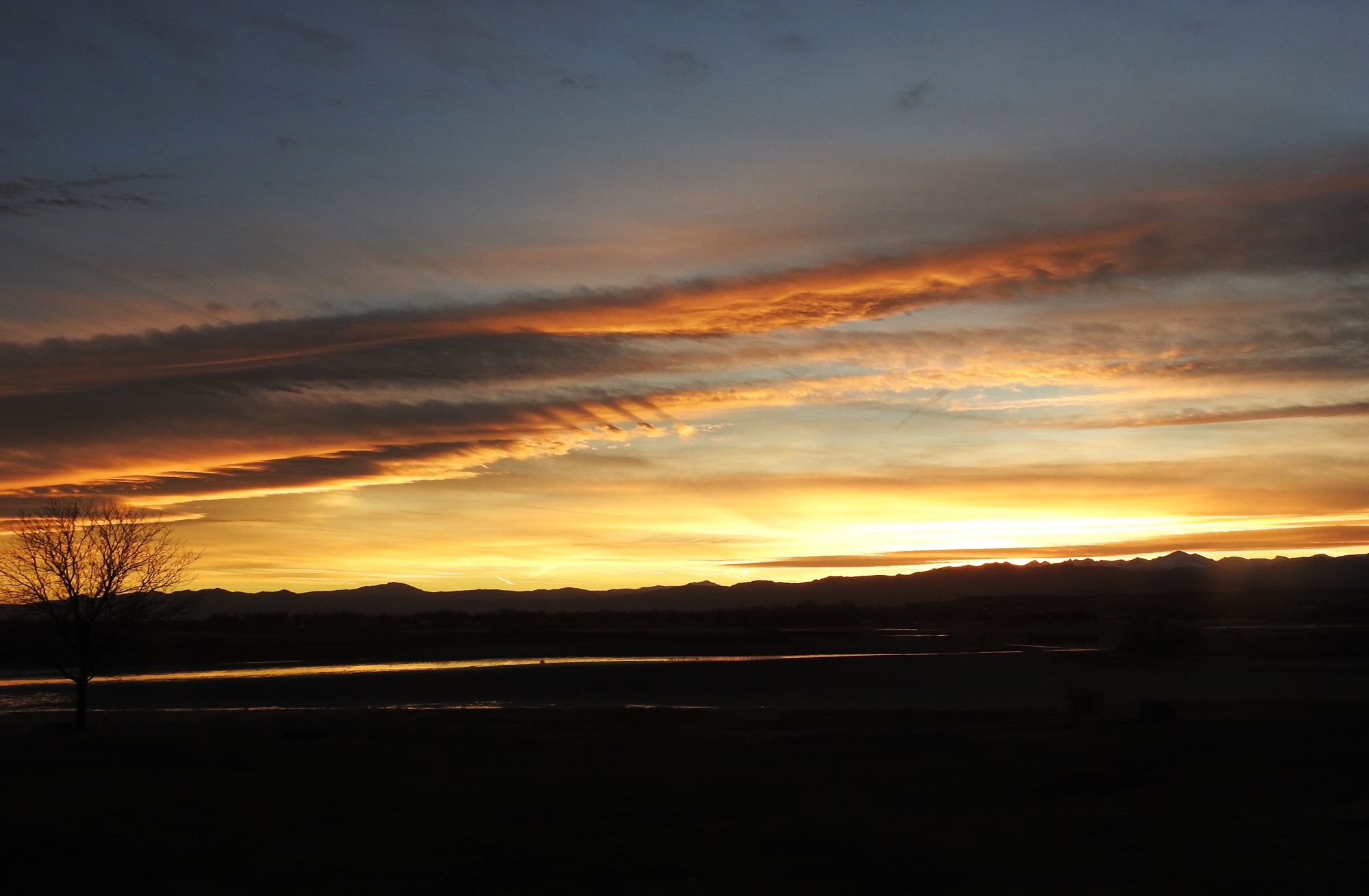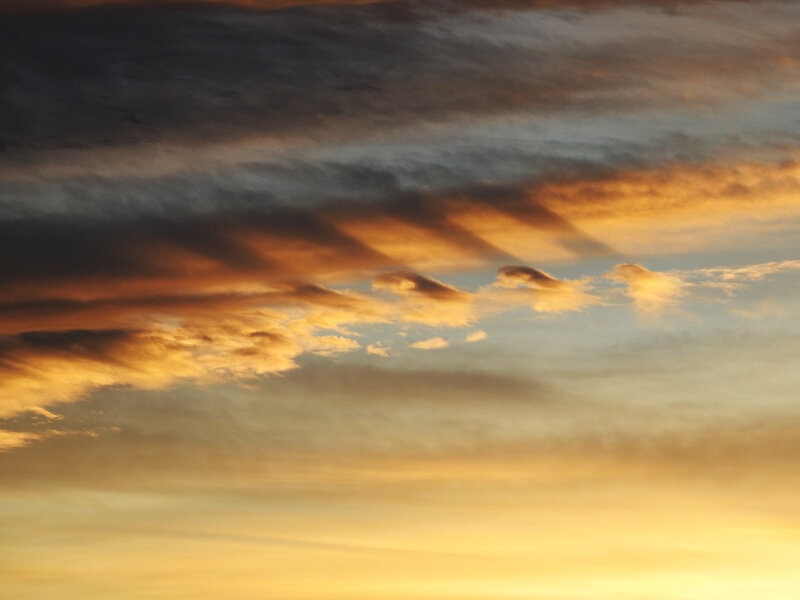Create a free profile to get unlimited access to exclusive videos, sweepstakes, and more!
In the shadow of fluctus

I don't mean this blog to become all jaw-dropping gorgeous clouds all the time, but c'mon, when I have a jaw-dropping gorgeous cloud photo I have to show you, especially when it ties in to articles I've written recently!
I was sitting at my computer working right at sunset the other day, and happened to glance over my shoulder out the window. It faces southwest, so I usually get to see interesting clouds and lovely sunset colors around that time. But what I saw this time had me exclaiming in delight, leaping out of my chair, grabbing my camera, and running outside to get the shot. Check this out:
Yeah, I know, right? Even if you don't know clouds well, that's a really weird and cool sight. But if you know what you're seeing, it gets a lot cooler.
Those waves in the cloud line are called fluctus clouds or, more mouth-fillingly, Kelvin-Helmholtz clouds. They form when you get a layer of air blowing over a slower moving layer; a small blip in the lower layer gets blown up and over by the layer above, and forms the shape of a breaking wave. You can get a repeating pattern of them across a cloud line, forming a saw-blade-like structure.
That's what I happened to catch in the photo. Not only that, the Sun was illuminating them from below, and they were casting their shadows on the cloud bank behind them! The parallel shadows made this a really striking view. You just don't see linear structure like this very often in the sky, and not aligned so dramatically to boot.
And it's not like the sky around them was holding back either. Here's a wider view to give you context:
Maybe now you can see why I leapt out of my chair to get the photo. It was a fantastic display!
I never saw these kinds of fluctus clouds until I moved to Colorado; they're not that common in most locations, but we see them relatively often here. They're so much fun I wound up writing about them in a previous post with a video that explains them pretty fully:
As you can see in the video, the clouds don't last long; they tend to break up pretty quickly. So it was lucky I happened to spot them out my window.
But it was even luckier than that. Besides the clouds not lasting long, the angle of the Sun and the clouds behind them changed rapidly as well, and literally two minutes after I took these shots the shadows were gone. The clouds lasted a couple of minutes longer.
Funny, too: I only took about 10 pictures before my camera battery ran out (I should have noticed the indicator light warning me). So I had to put the camera down and just look. As I did, I noticed to my amazement that there were fluctus clouds everywhere. Look again at the wide-angle shot; you can see the bumps all over the clouds along their lines. There were several dozen of them, by my count.
You can also see the rays (called crepuscular rays) extending above and to the left of the cloud to the left of the frame. Those were fanning out due to perspective and added even more drama to this scene.
Living a few kilometers to the east of the lee side of a mountain range provides for some really dramatic cloudscapes, let alone weather (I'll have to write about Chinooks sometime, because they rattle the house pretty often here). It's hard not to stop and gawk when it happens … and to share the photos and science behind them, too.




























